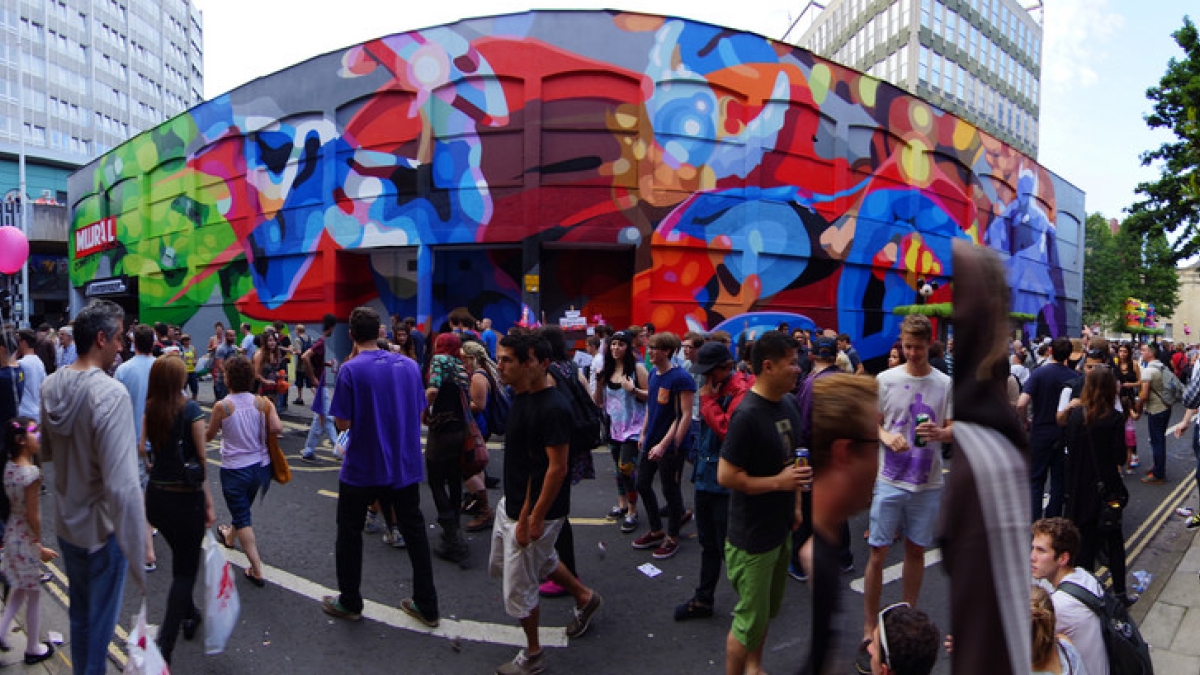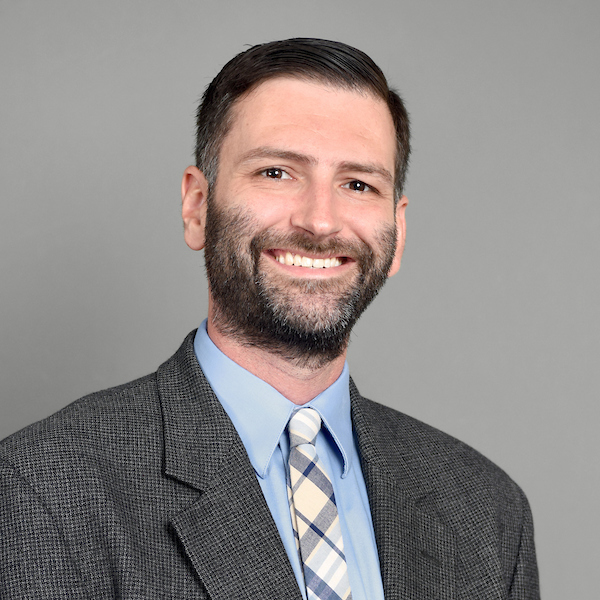'Hot Spots' project demonstrates the power of community to prevent crime

Want to seriously reduce crime in your neighborhood? Throw a party and bring in the love.
That’s essentially the big takeaway in a newly released study headed by Cody Telep, an assistant professor in Arizona State University’s School of Criminology and Criminal Justice.
“Community Crime Prevention in High-Crime Areas: The Seattle Neighborhood Group Hot Spots Project” was spearheaded by Telep and conducted with Julie Hidbon, a professor at Southern Illinois University. The two-year study examined the effectiveness of two interventions led by a community-based nonprofit organization in Seattle. The results showed that community-led prevention efforts — holding block parties, activities and events, building relationships and other nonenforcement alternatives — in high crime areas can have a positive impact on crime and disorder.
Telep, whose research focuses on synthesizing research to assess what works in policing and practices on crime, disorder and citizen perceptions, spoke to ASU Now about his new findings.
Cody Telep
Question: What is a "hot spot"?
Answer: Hot spots are small units of geography with high levels of crime. The actual level of crime is really relative to the city, so it’s about finding the highest crime locations in a particular jurisdiction rather than meeting a threshold.
The exact size varies too, based on the particular focus of a program. Sometimes they can be as small as a single address, but they are often defined as a single street block or street segment. They can be slightly larger too, for example when there’s a drug market that might span a few street blocks. What’s important though is that they are small — we often refer to them as microplaces or microunits of geography. And this is significant, because policing is often organized around larger units of geography like beats or precincts, while community groups or nonprofits often emphasize entire neighborhoods. The focus with hot spots is on the particular locations or street blocks within a police beat or neighborhood that have very high crime. The idea is to really focus attention on the microplaces that need it most.
Q: Why is it that a small number of microplaces are responsible for significant crime throughout an entire city?
A: There has been a really consistent finding across a number of different cities of different sizes that crime is highly concentrated. Generally, half the crime in a city is found on 5 percent or less of the street blocks, suggesting that focusing on those locations could be really important for reducing crime citywide.
Only recently has research begun to explore what explains this level of concentration. What we’ve seen so far though is that factors related to crime opportunities and factors related to street-level disorganization or community dynamics are also highly concentrated at a small number of places. Crime is highly concentrated because there are also a small percentage of streets in a city with the most favorable conditions for crime. Some of that has to do with the concentration of residents and employees on certain streets, which increases the opportunities for victimization. Community dynamic factors, like poverty, are also highly concentrated, and impact crime levels at the street block level. Even collective efficacy, or the extent to which neighbors look out for another, varies by street, and streets with higher collective efficacy or informal social control are less likely to be hot spots.
Q: There’s a line in your report that seems to be the heartbeat of this study: “When disorderly behavior goes unchallenged, over time potential offenders recognize the neighborhood as a place with low social control, allowing more serious crime to move in.” Can you expound on this statement?
A: This statement draws from the famous broken windows theoryThe broken windows theory is a criminological theory that visible signs of crime, anti-social behavior, and civil disorder create an urban environment that encourages further crime and disorder, including serious crimes. Source: Wikipedia, first described in 1982 by James Q. Wilson and George Kelling. Broken windows has most prominently been adopted by police agencies, and has been used as a justification for focusing on lower level disorder crimes as a means to prevent more serious crime. There is somewhat mixed evidence on the effect of targeting disorder through more low-level arrests on more serious crime.
But the broken windows theory does not require the police to be the ones to intervene. In our study, we wanted to understand whether a community nonprofit, rather than the police, could lead that charge to increase social control. Obviously a nonprofit organization does not have the same formal control ability as the police do, but we were interested in whether they might be able to effectively increase levels of informal social control by motivating residents to play a greater role in addressing crime, or, in the language of the broken windows theory, challenging disorderly behavior.
Q: Talk about the two sites in your study and what was conducted, what worked, and didn’t work and the big takeaways.
A: The project was led by Seattle Neighborhood Group (SNG), a nonprofit organization focused on crime prevention that has been working in Seattle for 30 years. SNG staff were aware of research showing the strong concentration of crime at small units of geography, much of which was initially done in Seattle, and thought it would be useful to focus their community building and work in smaller geographic areas.
Our evaluation focused on two sites. The first was a neighborhood park and the residential streets surrounding it. The second was a two-block area that was more mixed-use with residences and bars and restaurants. In both sites SNG implemented a number of different projects, designed to both address opportunities for crime and encourage community building. In both sites SNG led crime prevention trainings and worked with residents to identify changes that could be made to the environment (e.g., adding more street lighting). In the park site, community building activities focused on residents taking back the park from drug dealers, and SNG coordinated park barbeques and movie nights. On the mixed-use site, SNG focused more on activities where residents and business employees could meet one another and work together on crime prevention activities.
We looked at pre- and postprogram changes in 911 calls to the police in each site. We found evidence of declines in disorder-related calls in both sites, with more evidence for a decline in total crime in the park site. Crime was not just pushed to geographic areas nearby, and crime decreased more in the targeted hot spots than similar nearby high crime locations. Our results suggest that a hot spots intervention that was community-led, rather than police-led, can still have significant impacts on crime. We think the program may have been somewhat more effective in the park site, because SNG was especially successful in engaging with residents, while partnering with the business community in the other site proved more challenging.
Q: What is it that nonprofit groups and residents can do in crime-heavy neighborhoods can do that police can’t?
A: While the police will always play an important role in crime reduction efforts, we think that neighborhood nonprofits may be especially well positioned to lead crime prevention projects, particularly in communities where trust in the police is low. SNG has a long history of working with diverse and immigrant communities, where there may be greater hesitancy to partner with police. Additionally, the crime reduction benefits of this program came without any intensive enforcement or increased arrest from the Seattle Police Department. Such efforts can be effective in targeting high crime locations, but may also have negative implications for perceptions of police legitimacy.
Q: What are the next steps in this area of work? Is there a potential to replicate this project elsewhere?
A: SNG continues to focus their crime prevention work on hot spots, and we are working on plans for a second evaluation. The organization adopted our recommendation to include additional data collection in their project efforts, so moving forward, we can look at not only crime, but also changes in resident perceptions of crime and safety and changes in observed levels of disorder.
We also would really welcome the opportunity to test this model elsewhere, and see whether we can replicate the positive findings in a different context. There are a number of engaged nonprofits in Phoenix, so it would be great moving forward to try to implement and evaluate a similar program locally.
Top photo courtesy of Flickr.com
More Arts, humanities and education

ASU graduate education programs are again ranked among best
Arizona State University’s Mary Lou Fulton College for Teaching and Learning Innovation continues to be one of the best graduate colleges of education in the United States, according to the…
ASU FIDM students to see their designs on the runway at Uncertainty Fashion Showcase
Nola Hill is perfecting every stitch of her fashion design collection, which she started conceptualizing last summer.She is among 30 ASU FIDM fashion design students who have been working late into…

ASU+GSV Summit brings experts together to discuss innovation in education
This week, Arizona State University President Michael Crow and other university leadership joined education and learning experts from around the globe at the ASU+GSV education technology summit in…


